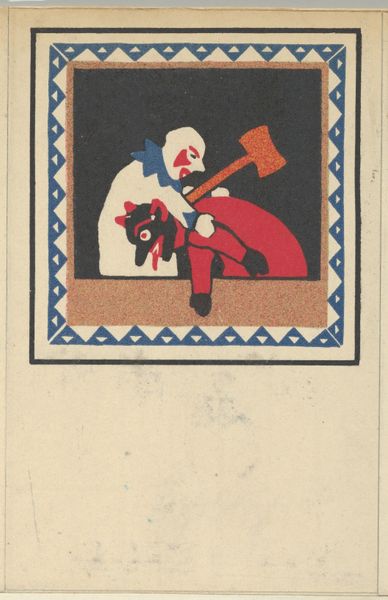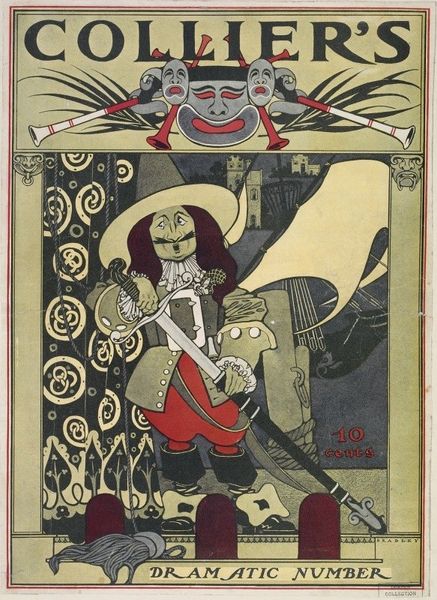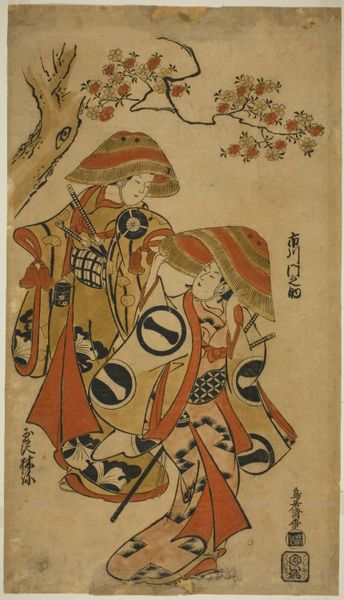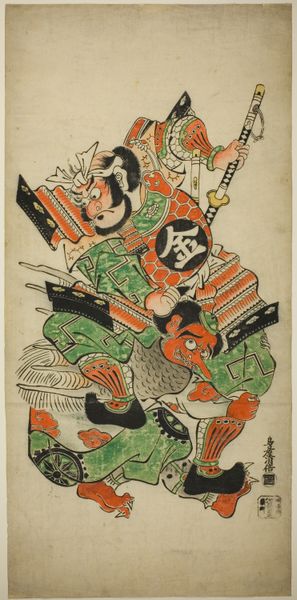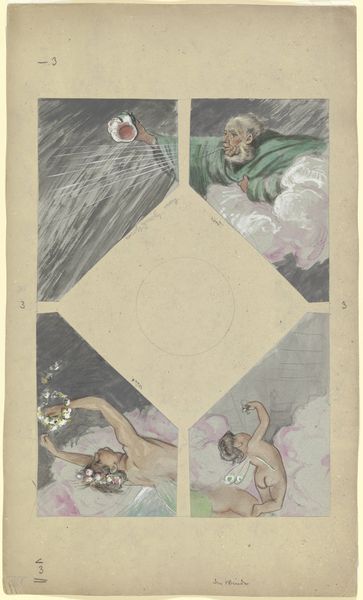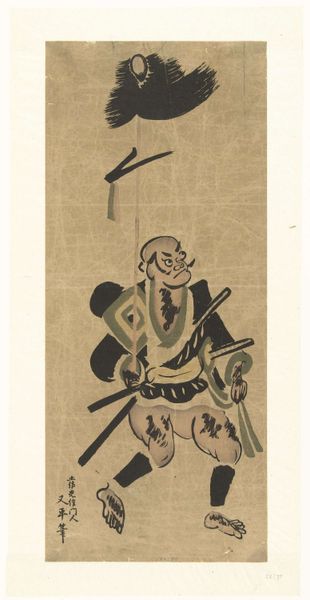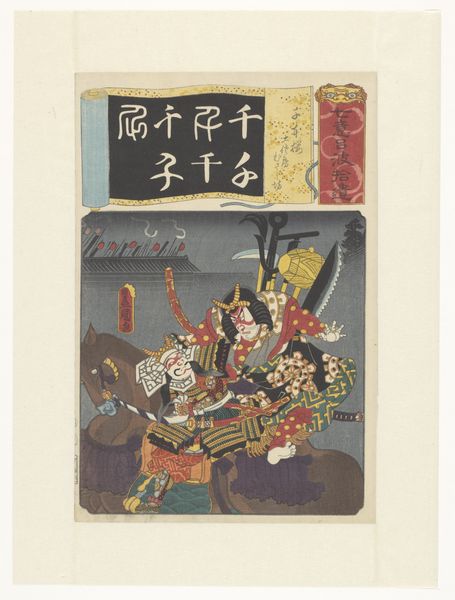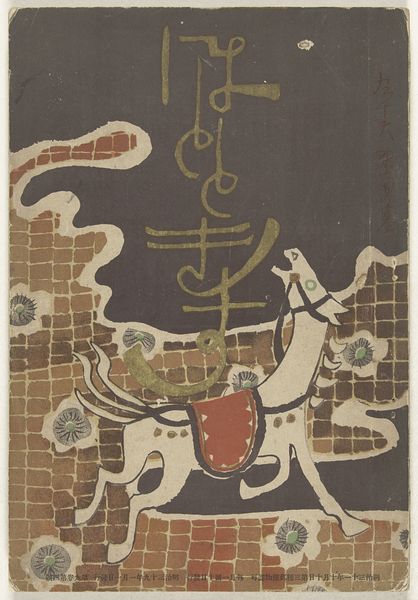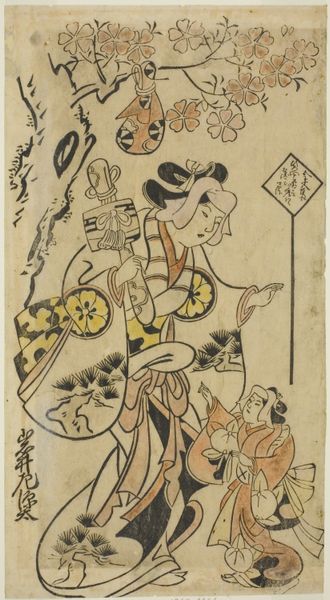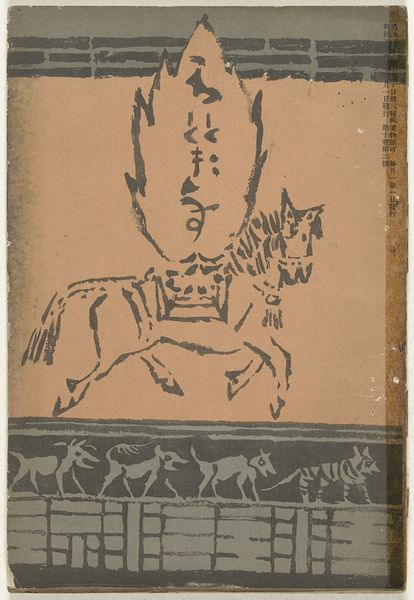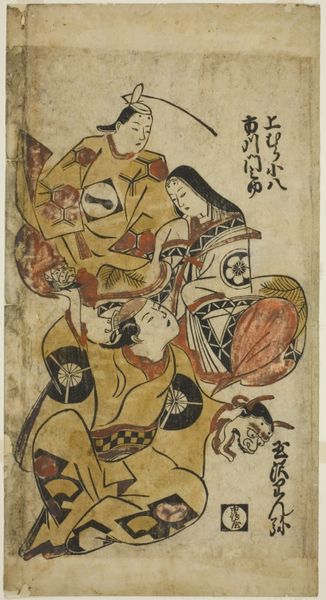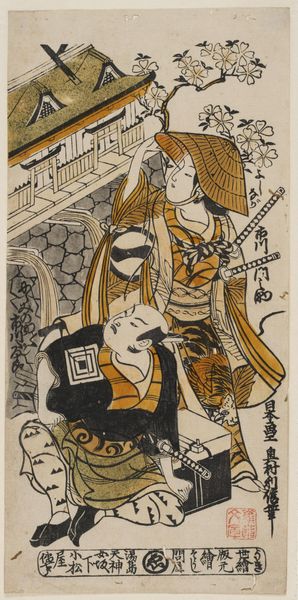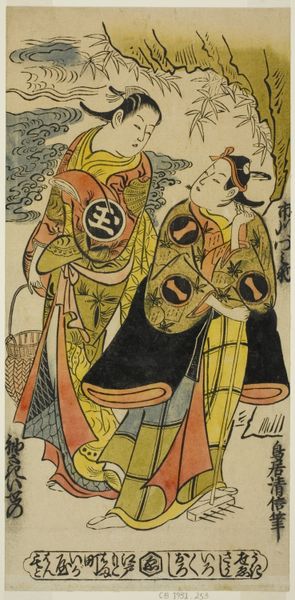
#
quirky illustration
#
childish illustration
#
cartoon like
#
cartoon based
#
caricature
#
illustrative and welcoming imagery
#
wedding around the world
#
illustrative and welcoming
#
cartoon style
#
cartoon carciture
Dimensions: page size: 27.3 x 25.5 cm (10 3/4 x 10 1/16 in.) overall size (volume closed): 29 x 26 cm (11 7/16 x 10 1/4 in.)
Copyright: National Gallery of Art: CC0 1.0
Curator: El Lissitzky’s “Chad Gadya (The Tale of the Goat),” created in 1919, immediately strikes me as deceptively simple. There’s a raw quality to the lines and the application of color. Editor: My eye is drawn to the central swirling image. It feels almost apocalyptic, a whirlwind of symbolic elements—a geometric village, text framing everything... the imagery gives off both destruction and childlike innocence simultaneously. Curator: Well, the flatness you observe reflects the move away from painterly illusionism of the pre-war era. Lissitzky embraced the aesthetics of the printing press here, a move towards reproducible art for the masses, something that democratized the image-making process. Notice the layered blocks of color? These emphasize the materiality of the printmaking. Editor: Absolutely. And speaking of symbols, we're obviously encountering something much deeper than just surface level childishness here. The Hebrew text, that swirling central vortex, the stacked architectural forms... these seem to evoke both the cyclical nature of life and historical narratives—perhaps loss and the hope for renewal, embedded in the story of a Passover song about the goat. Curator: Exactly! The labor invested in making these images accessible through print parallels the retelling of the "Chad Gadya" itself, passed down through generations. It questions what is considered “high” art by utilizing this popular song. Editor: The formal qualities definitely carry thematic weight. I find the flattened perspective adds to that feeling of impending chaos. Curator: Yes, it becomes less about realistic depiction and more about symbolic impact through graphic means. Lissitzky exploits that tension between representation and abstraction that so defined art of that time. He gives new life to the traditional narrative, recasting its meaning. Editor: Thinking about it all together – its themes of social structures, oppression, and ultimately, perhaps redemption—really heightens the emotional intensity for me. It leaves us wrestling with those questions rather than simply accepting a passive narrative. Curator: For me, this print encapsulates a moment in art history when artists were thinking deeply about how art could reach more people through accessible materials and forms of production, reflecting their experiences. Editor: It’s that fusion of ancient and avant-garde that resonates even today. Thanks for offering such a well-rounded view.
Comments
No comments
Be the first to comment and join the conversation on the ultimate creative platform.
